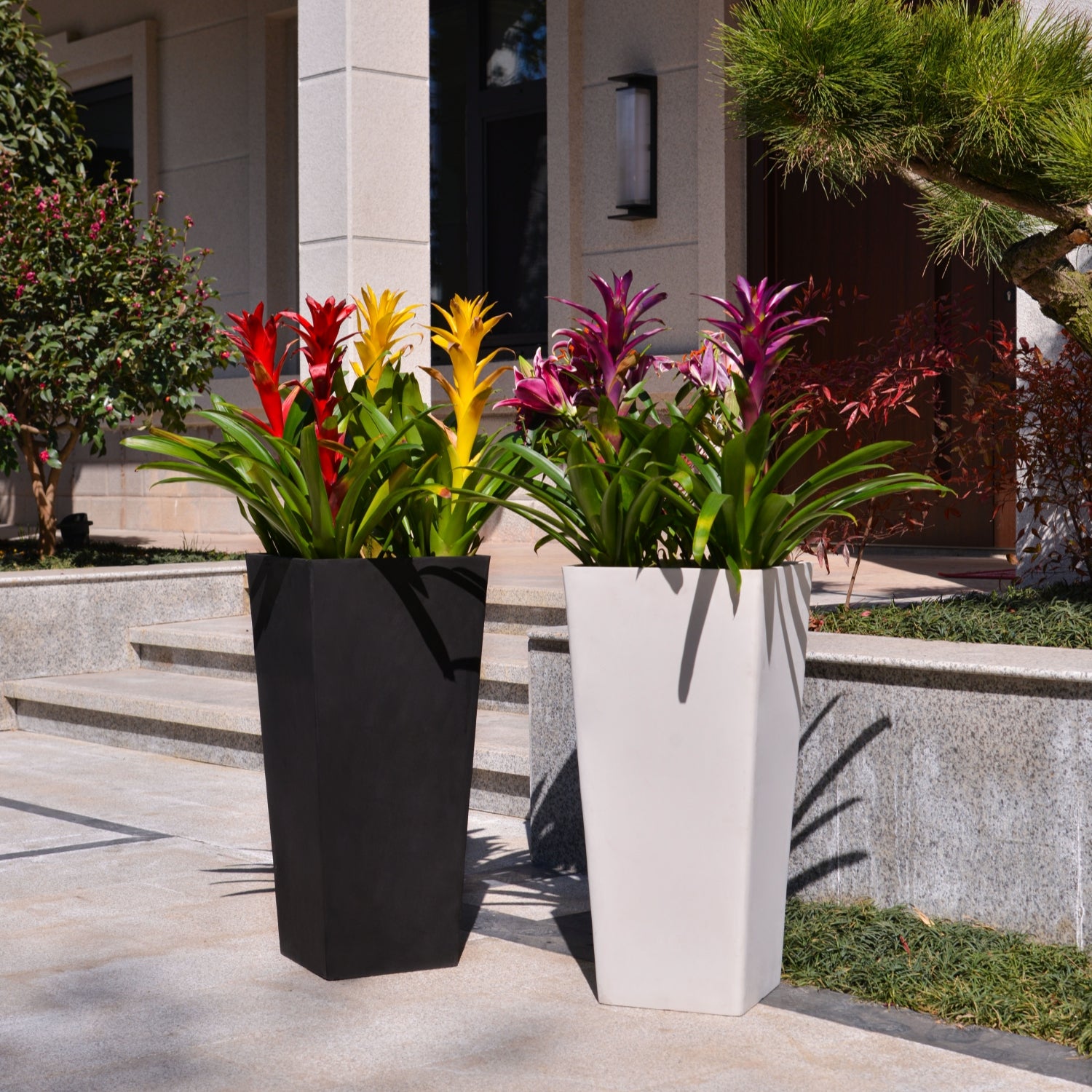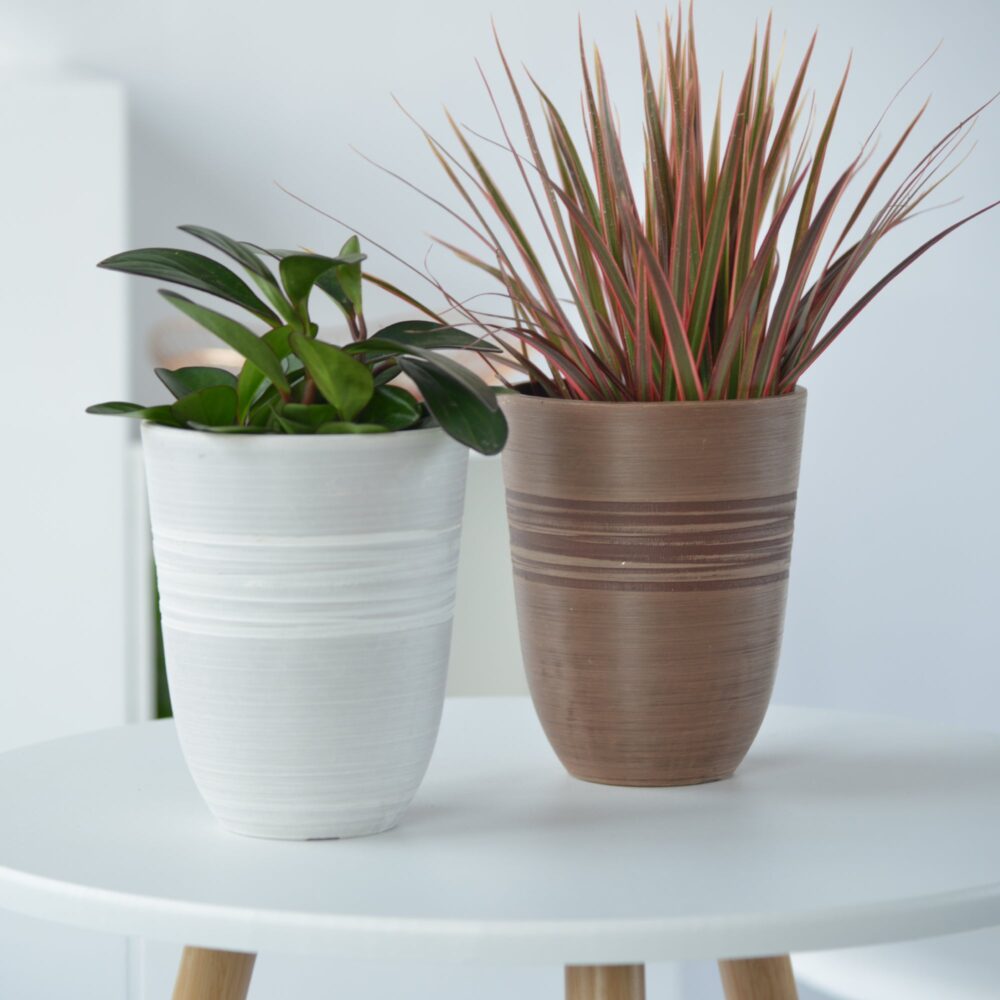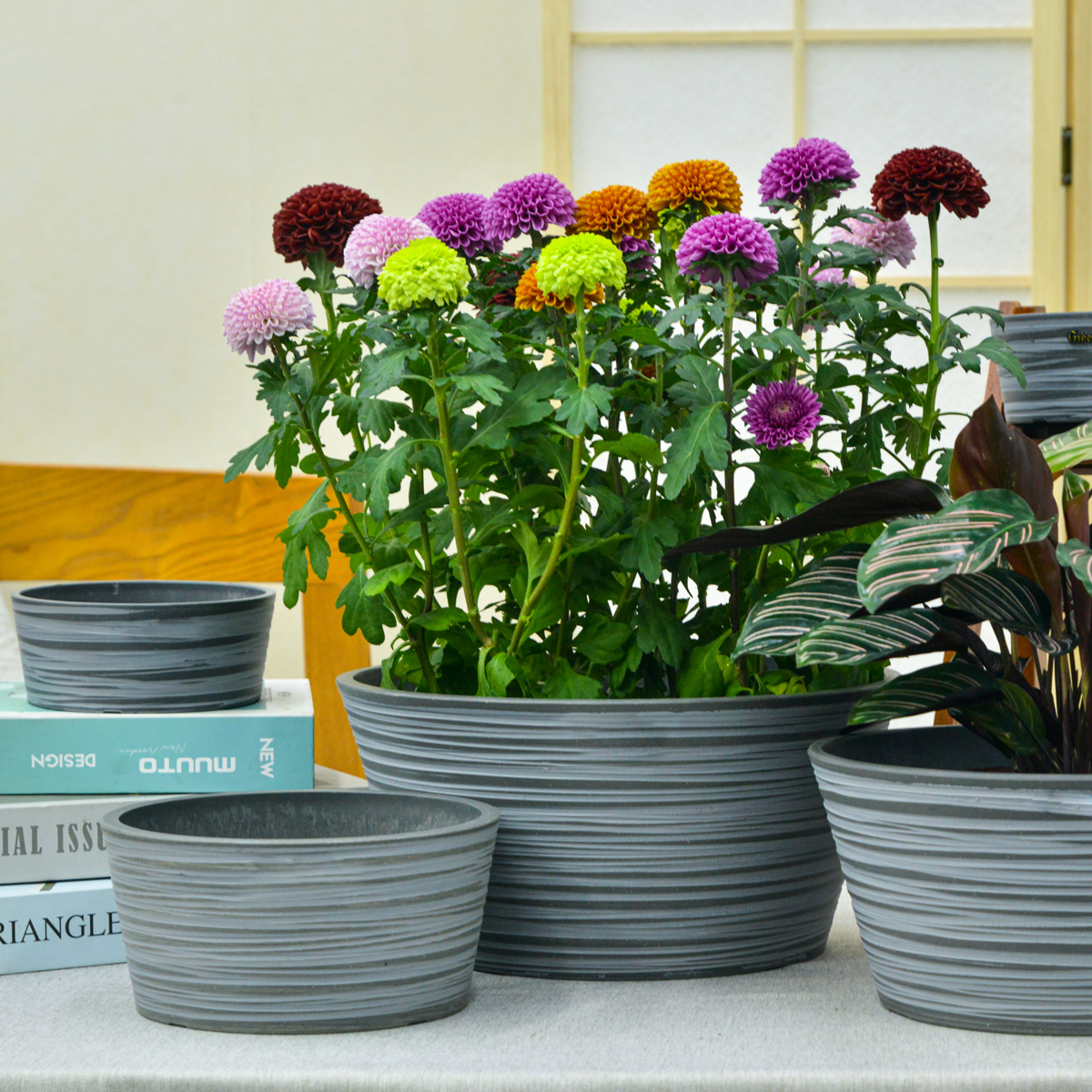Is It Difficult to Carry and Move Tall Planters? What Factors Should Be Considered When Placing Tall Planters?
Tall planters offer a striking way to display plants, adding height and visual interest to both indoor and outdoor spaces. However, their size can raise questions about their portability and optimal placement. Let’s delve into the challenges of moving tall planters and the key factors to consider when deciding where to position them.

The Difficulty of Carrying and Moving Tall Planters:
The ease with which you can carry and move a tall planter largely depends on several factors:
- Material: Lightweight materials like plastic or fiberglass are considerably easier to move than heavy materials such as concrete, stone, or large ceramic pots.
- Size and Height: Taller and wider planters naturally have a larger volume and can hold more soil, making them heavier. Their height can also make them awkward to lift and carry, potentially affecting balance.
- Weight When Filled: Once filled with soil and plants, even a planter made of a relatively light material can become quite heavy. Mature plants with established root systems add significant weight.
- Presence of Handles or Wheels: Some tall planters come equipped with built-in handles or even wheels, making them much easier to maneuver.
- Your Physical Strength: Your own strength and the availability of assistance will play a significant role in your ability to move a heavy planter.
Generally speaking, moving large, filled tall planters can be challenging and may require assistance or specialized tools like a plant caddy with wheels. It’s often best to position them in their desired location before filling them with a substantial amount of soil.

Factors to Consider When Placing Tall Planters:
Strategic placement of tall planters is crucial for both the health of your plants and the overall aesthetics and functionality of your space. Here are some key factors to consider:
- Sunlight Requirements of Your Plants: This is the most critical factor. Observe how sunlight hits your space throughout the day and choose a location that provides the appropriate amount of light for the specific plants you intend to grow. Some plants need full sun, while others prefer partial shade or even full shade.
- Wind Exposure: Tall planters, especially lighter ones, can be susceptible to tipping over in strong winds. Consider placing them in more sheltered areas or using heavier materials for stability. You might also consider grouping them together or placing them against a wall for added support.
- Foot Traffic: Ensure your tall planters are placed in a location where they won’t obstruct walkways, doorways, or other areas with frequent foot traffic. This prevents accidental bumps and potential damage to both the planter and passersby.
- Aesthetics and Design: Think about how the tall planter will complement the surrounding environment. Consider the planter’s color, style, and the visual impact of the plants you’ll place in it. Tall planters can be used to create focal points, frame entrances, or define different areas within your space.
- Water Access: Position your tall planters in a location where you can easily access them for watering. Consider the length of your hose or the distance you’ll need to carry watering cans.
- Surface Stability: Place your tall planters on a level and stable surface to prevent them from wobbling or tipping. Uneven surfaces can also lead to drainage issues.
- Drainage: While tall planters often have good drainage, ensure the location allows for proper water runoff. Avoid placing them directly on surfaces that could be damaged by excess water.
- Privacy: If desired, use tall planters with dense, tall-growing plants like bamboo or ornamental grasses to create a natural and attractive privacy screen for your patio, balcony, or deck.
- Accessibility for Maintenance: Ensure you can easily reach the plants within the tall planter for tasks like pruning, fertilizing, and deadheading. Consider the height of the planter and your own reach.
- Indoor Considerations (if applicable): If placing tall planters indoors, consider the weight and potential for scratching floors. Use protective pads underneath the planters. Also, think about the available light from windows and the overall flow of your indoor space.
By carefully considering these factors, you can choose the ideal location for your tall planters, ensuring the health and happiness of your plants while enhancing the beauty and functionality of your living space.
KC3-14A
By greenship|2024-08-16T06:26:30+00:00August 16, 2024|Categories: Hand-carving Series|
GreenShip 27inch Tall Planters for Porch, Large Outdoor Planter Pots with Drainage Hole
By greenship-seo|2025-04-10T06:27:21+00:00April 7, 2025|Categories: Hand-carving Series|Tags: Decorative Flower Pots|
KC2-21G
By greenship|2024-08-13T06:19:08+00:00August 13, 2024|Categories: Hand-carving Series|
Plant Pots 6 inch 8 inch 10 inch for Indoor Plants, Set of 3 Modern Decorative Planter ts with Drainage Hole, Decorative Flower Pots
By greenship-seo|2025-04-10T06:39:28+00:00January 14, 2025|Categories: Hand-carving Series|Tags: Decorative Flower Pots|
k2-21G
By greenship|2024-08-13T06:17:26+00:00August 13, 2024|Categories: Hand-carving Series|
11THD
By greenship|2024-08-13T02:52:20+00:00August 13, 2024|Categories: Hand-carving Series|






